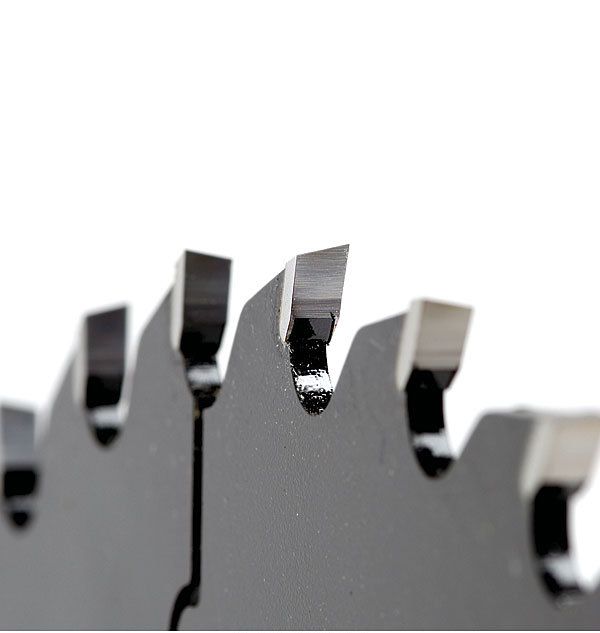What’s the Difference: Sawblade Tooth Angles
Top bevel, relief, and hook.

Top bevel, relief, and hook
Tooth count is an important feature in how a sawblade performs for example, cutting crown molding with a 14-tooth blade will create a mess, and cutting plywood with an 80-tooth blade will take a long time and possibly burn the wood. If you’re about to buy a new sawblade, though, you’ll also want to consider tooth angles.
TOP-BEVEL ANGLE
Blades with flat-top teeth, known as flat-top-grind (FTG) blades, are fine for ripping, but when you’re cutting across the grain, you need a blade whose teeth are beveled. Beveling the teeth on a sawblade allows them to score the wood, which results in a more precise cut. Common angles are 10°, 15°, and 20°. The greater the angle, the more precise the cut. On an alternate top-bevel angle blade, or ATB, these angles alternate left to right from tooth to tooth; on a combination blade, top-bevel teeth alternate with flat-top teeth. ATB blades generally cut very well, but they tend to dull more quickly than FTG blades. Also, the greater the bevel angle—some high alternate top-bevel (HiATB) blades have angles as high as 38°—the higher the likelihood they will dull quickly. Blades with triple-chip-grind (TCG) tooth configurations alternate flat-top teeth with slightly taller teeth that are beveled on both sides at a 45° angle.
RELIEF ANGLES
A metal sawblade spinning at a high rate and engaged in constant contact with wood is going to get hot. To reduce the friction that can leave burn marks along the cutline, manufacturers angle the teeth of some sawblades to minimize the surface area that comes into contact with the wood and to provide space for dust and chips (and the heat they contain) to escape. The top-relief angle is generally 12° for softwood and 15° for hardwood. Slight radial-relief and tangential-relief angles help to prevent burning along the sides of the kerf, although they can produce scratch marks.
HOOK ANGLE
The angle created by the face of a tooth and an imaginary line from the tip of the tooth to the center of the blade is known as the hook angle. The sharper this angle, the more aggressive the cut. Rip blades can have hook angles as high as 22°, which allows them to plow through long lengths of wood quickly and without excessive heat buildup. On the other hand, blades designed for cutting melamine and similar materials often have negative angles—up to negative 6°. Cutting with low-hook-angle blades is slower than doing so with high-hook-angle blades, and it requires more power. These cuts are cleaner, however, and produce less tear out. On a sliding miter saw or a radial-arm saw, a blade with a negative hook angle reduces the chance of the blade grabbing the stock and feeding too quickly.
For more photos and details on sawblade tooth angles, click the View PDF button below.
Fine Homebuilding Recommended Products
Fine Homebuilding receives a commission for items purchased through links on this site, including Amazon Associates and other affiliate advertising programs.

Reliable Crimp Connectors

Handy Heat Gun

Affordable IR Camera


























